
The Department of Sustainability & Environment (DSE) yesterday released data on the number of housing transfers and mortgage lodgements/disharges across Victoria in for both April and May, which revealed ongoing weakness in both housing turnover and mortgage demand.
Looking at the transaction side of the market first, you can see that the number of transfers over both April and May to be 30% higher than the record low recorded in March 2013 (see next chart).
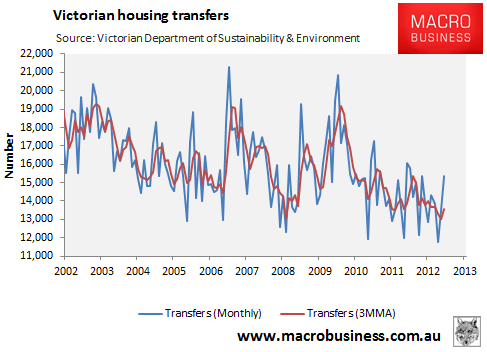
However, the data series is not seasonally adjusted and is, therefore, inherently volatile. Accordingly, it is presented below on a rolling annual basis, which allows comparison to the same month the year before, therefore, overcoming issues around seasonality (see next chart).
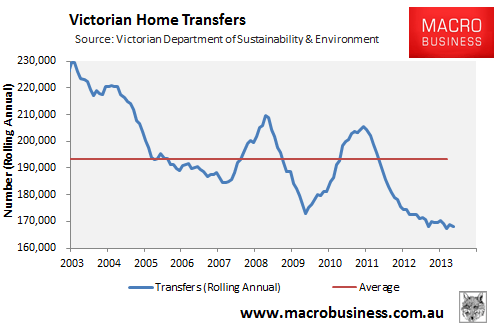
As you can see, the annual number of housing transfers rebounded slightly over the two month period – with 168,029 transfers taking place in the year to May 2013, up from the record low 167,200 transfers in the year to March 2013 – but remain 13% below the decade average.
The DSE’s mortgage finance statistics are unique in that they provide data on both mortgage lodgements (i.e. new mortgages) and mortgage discharges (i.e. mortgages repaid in-full). Below is a chart showing both series on a 3MMA basis:
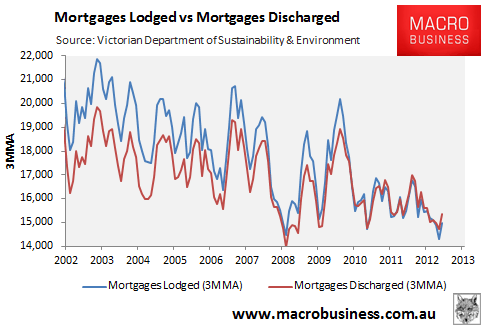
And the next chart shows the same data on a rolling annual basis:
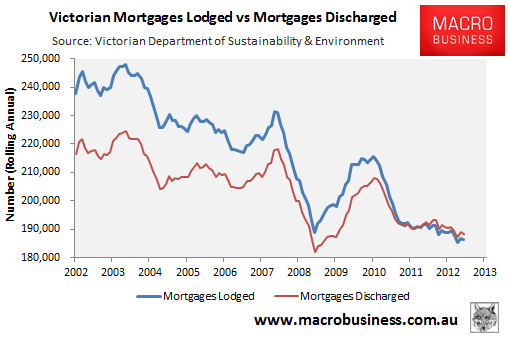
And below is the number of net new mortgages created, calculated by subtracting mortgage discharges from mortgage lodgements:
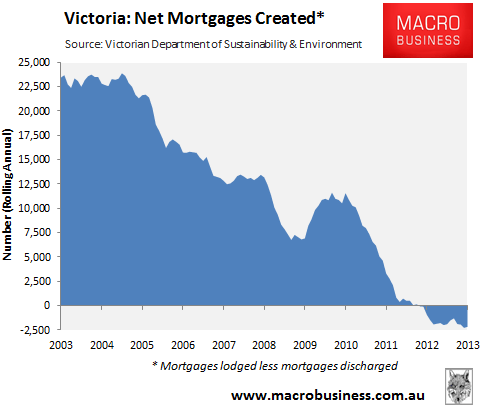
According to the DSE, the number of mortgages lodged in the months of April and May were 383 and 209 less than the number of discharges. On an annual basis, the number of mortgages discharged (188,322 in May) also continued to exceed the number of mortgage lodgements (186,145 in May), meaning that 2,177 mortgages were lost in the State of Victoria in the 12-months to May 2013, up from 1,942 mortgages lost in March. This compares to the average of 12,209 annual net mortgage creations since the series began in 2002.
Despite the recent sharp pick-up in Melbourne auction clearance rates, suggesting an increase in buyer activity, the aggregate data remains weak showing minimal improvement in either transaction volumes or mortgage demand. As such, the Victorian (Melbourne) housing market appears to remain on a fragile footing.

